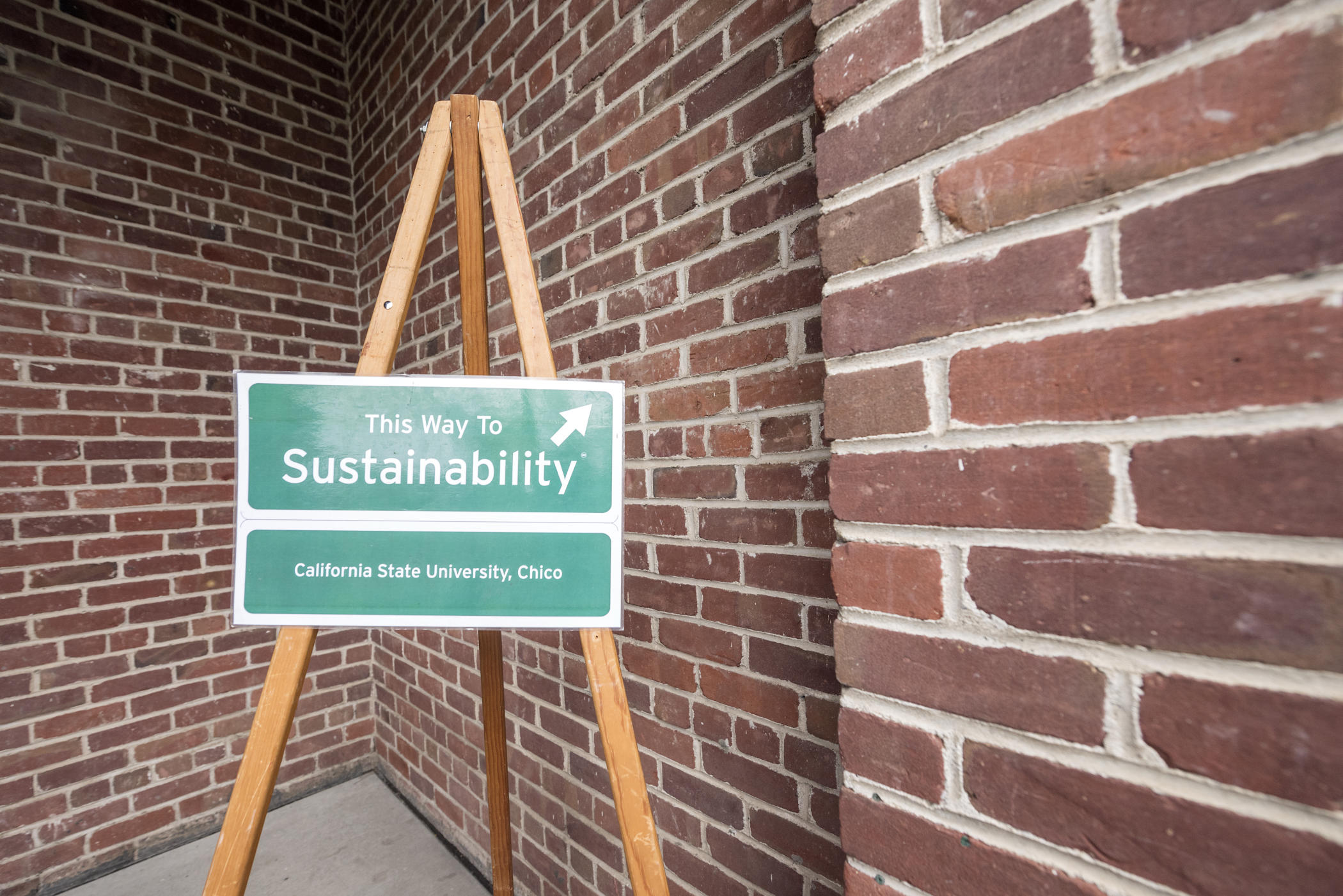CSU, Chico Earns Highest Sustainability Score Among Any CSU by the Association for the Advancement of Sustainability in Higher Education

This Way to Sustainability Conference XIII takes place Thursday, March 15 and Friday, March 16 around the California State University, Chico campus. Approximately 130 sustainability professionals will speak during this year’s student-run event, which is one of the largest conferences of its kind in the nation, and attendance is expected to reach 1,400 participants.
California State University, Chico and its sustainable practices continue to set the pace for the rest of the CSU system.
Earlier this year, the Association for the Advancement of Sustainability in Higher Education (AASHE) awarded CSU, Chico a Gold Rating for its overall sustainability efforts on campus, with a score of 73.41—the highest score ever achieved by a CSU campus. AASHE’s Sustainability, Tracking, Assessment and Rating System (STARS) employs a robust rating system and factors in academics, engagement, operations, planning and administration, and innovation and leadership.
“This STARS Gold Rating reflects years of hard and intentional work by students, staff and faculty across campus and Chico State’s continued emphasis on leadership and innovation in sustainability and climate action,” said Fletcher Alexander, sustainability programs manager of the University’s Institute for Sustainable Development (ISD), which collected and submitted the data to AASHE.
This was CSU, Chico’s second AASHE STARS Gold rating, having earned its first in 2013 with a score of 67.25. The most recent rating is valid for three years.
The AASHE award comes after CSU, Chico reported a 34 percent reduction in greenhouse gas (GHG) emissions since 2006, based on updated 2015 data submitted to Second Nature. This significant milestone follows the University’s 2007 pledge to roll its overall GHG emissions back to 1990 levels by the year 2020. The Second Nature data reflects that the goal was achieved five years early.
CSU, Chico also earned a Climate Leadership Award in 2014 from Second Nature and is still the only CSU to do so. The next sustainability goal, said Alexander, is for the campus to reach climate neutrality – including scope 1, 2 and 3 GHG emissions – by the year 2030. It is an ambitious target, but one that the University takes seriously.
“The results of our most recent emissions inventory are encouraging and show us where we need to focus moving forward,” said Alexander. “As the University enters a yearlong Master Planning process this summer, sustainability and climate action will be central to the effort, and the Master Plan coming out of this process will outline our strategies for moving from our interim Climate Action Plan target to neutrality by 2030.”
The ISD continues to promote the importance of sustainability on campus and in the community. In April, it hosted This Way to Sustainability Conference XIII, which continues to be the nation’s largest student-run sustainability conference. The ISD has also put together a public-facing Campus Sustainability Storyboard, a look into real-time energy usage and emissions in academic buildings, residence halls, and AS buildings across campus.
Finally, the ISD is entering the third year of the South Campus Neighborhood Project, a neighborhood improvement venture coordinated by the University’s Resilient Cities Initiative and its partnership with Public Works at the City of Chico.
In September, the Princeton Review again recognized CSU, Chico’s ongoing commitment to sustainability when it included the University in its annual “Guide to Green Colleges.” Based on criteria such as students’ healthy and sustainable lifestyles on campus, the school’s ability to prepare its students for careers in sustainability and how environmentally responsible the school’s policies are, CSU, Chico received a Green Rating of 90 out of a possible 99. The Princeton Review began publishing its “Guide to Green Colleges” in 2010, and CSU, Chico has been named to the list every year.


